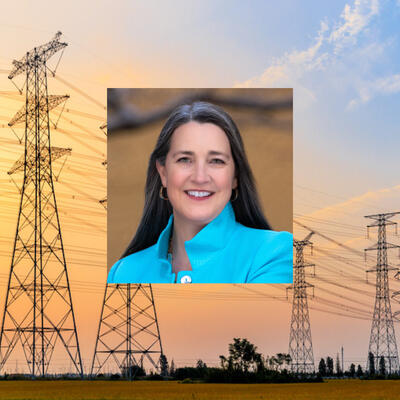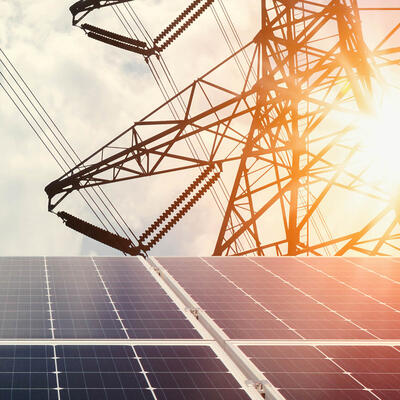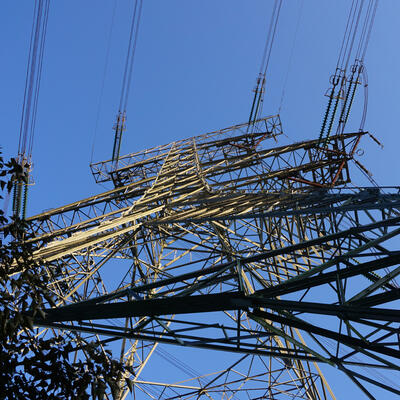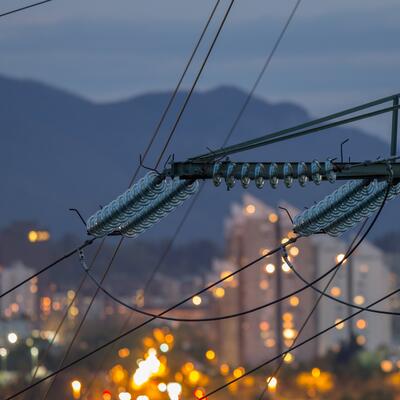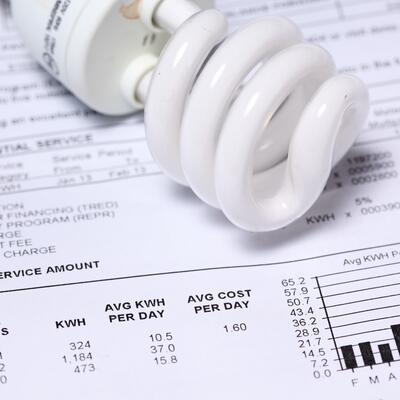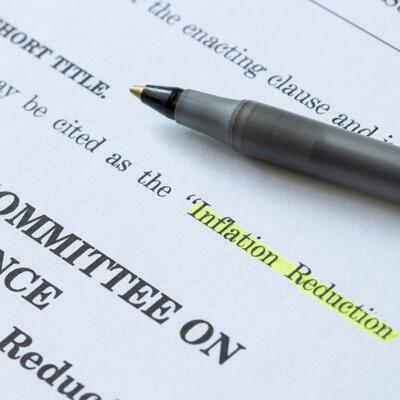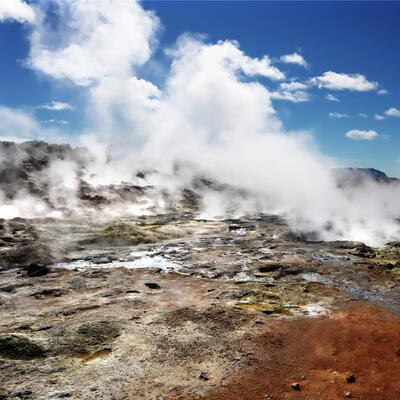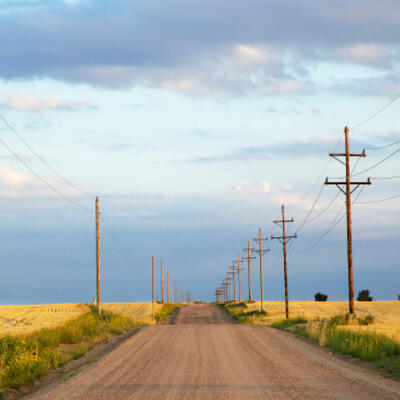
Missed Connections: Modernizing Our Multiple Grids
Guests
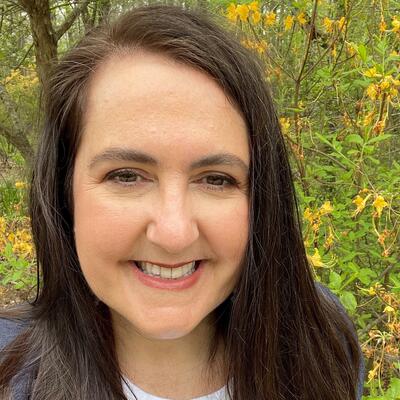
L. Michelle Moore
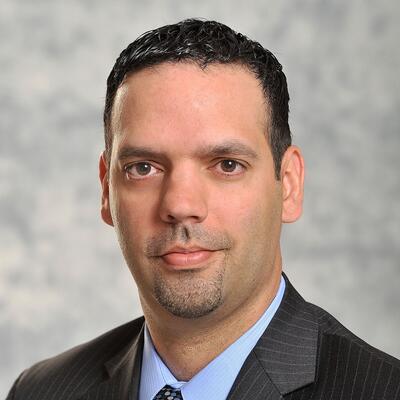
José Zayas

Pat Wood III
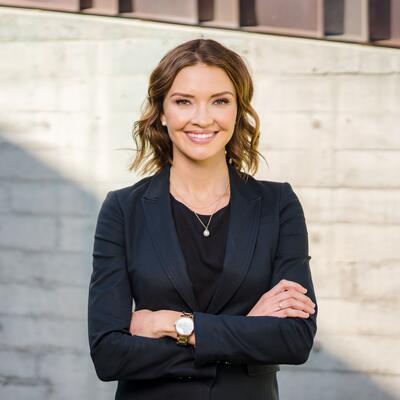
Jennifer Gardner
Summary
Thousands of renewable energy projects are ready to be built and start producing fossil-free power, but they’re stuck in a long limbo for one essential piece of the puzzle: getting connected to the grid. José Zayas, Executive Vice President of Policy and Programs at the American Council for Renewable Energy says, “The thing that at least keeps me up at night is that transmission expansion is hard to do and it takes a long time.”
One reason why connecting new renewable energy projects to the grid is so difficult is because the grid itself is so complex. In the U.S. there is not just one national grid. In fact, there are three major regional grids: The Eastern Interconnection, Western Interconnection and the Texas Interconnection. The Texas Interconnection is overseen by the Electric Reliability Council of Texas, or ERCOT. Within those regional grids, there are also regional transmission organizations, or RTOs, that control and coordinate the flow of energy, which can help different users share power.
Think of it like our roads and highways – with a national interstate system, smaller highways and local streets and roads. But imagine if parts of the country were totally split from each other, that’s what's happened with the grid. Pat Wood, CEO of Hunt Energy and a former chairman of the Federal Energy Regulatory Commission, says “Across the boundary lines, those bridges are pretty rickety compared to the nice big ones inside these regions.”
The Bipartisan Infrastructure and Jobs Act and the Inflation Reduction Act both have provisions that will help modernize the grids, but a big obstacle to getting energy projects online is getting them through the permitting process, which is currently very slow and tedious. Recently, a top trade group for renewables called on environmentalists and progressive Democrats to support permitting reform – something Republicans have been advocating for – to fast track new energy infrastructure. There is a real chance for some bipartisan policymaking to help relieve permitting roadblocks. Wood says, “We've committed to a low carbon agenda. We've got a continent worth of low carbon resource. If we can’t connect the dots, shame on us.”
At the same time that renewable projects are waiting to come online, there has also been growth of a decentralized “small grid.” Think solar panels on rooftops and battery walls. Jennifer Gardner, Vice Chair of Western Energy Imbalance Market, says, “Some combination of what I’m gonna call big grid and small grid efforts will be necessary to reach our decarbonization goals.”
Rural America currently has the burden of the highest energy bills at a time when the cost of everything else is rising and wages aren’t keeping pace. Michelle Moore, CEO of Groundswell and author of Rural Renaissance: Revitalizing America's Hometowns through Clean Power, says, “It's not because rural utilities charge more for energy, it's because people are living in older, less efficient housing.” The Inflation Reduction Act includes incentives to help bring more energy efficiency to those homes.
It’s easy to forget that less than 100 years ago, much of the country didn’t have electric power. Now the transition to clean energy offers another opportunity to include rural communities in a just and equitable way. Moore says, “It will be an opportunity to really reinvest in our rural communities and help bring prosperity back.”
Episode Highlights
4:43 - Pat Wood on transmission between the national grids
6:54 - Jennifer Gardner on grid operation in the western states
9:03 - José Zayas on the impediments of transmission between regional grids
14:13 - Jennifer Gardner on the Western Energy Imbalance Market
16:45 - José Zayas on grid expansion and the Department of Energy
19:56 - Pat Wood on getting energy from where it’s produced to where it’s needed
29:30 - Pat Wood on middle ground policy and permitting reform
39:45 - Michelle Moore on how electricity was brought to rural America.
43:45 - Michelle Moore on the effects of energy efficiency on rural poverty.
Resources From This Episode (6)
Full Transcript
Note: Transcripts are generated using a combination of automated software and human transcribers, and may contain errors. Please check the actual audio before quoting it.
Greg Dalton: I’m Greg Dalton.
Ariana Brocious: And I’m Ariana Brocious
Greg Dalton: When we flip the switch at home or the office, we expect the lights to come on. It wasn’t always that way.
Michelle Moore: Not even 100 years ago the vast majority of America didn't have electric power.
Ariana Brocious: As we’ll talk about with author Michelle Moore, electrifying rural America in the 1930s – one of FDR’s New Deal projects – transformed life for so many people. And for decades our national infrastructure of transmission lines has done a good job, though it's increasingly affected by climate-fueled severe weather events.
Greg Dalton: Those have been very damaging. And in order to slash emissions and stave off the worst of climate disruption, we’re going to have to switch to renewable energy and electrify just about everything.
Ariana Brocious: And there’s been a boom in renewable energy projects in the last couple decades. But what people often forget is that the electricity generated by those renewable projects has to get to the people who need it. That’s where the grid, as it currently exists, might fall short.
José Zayas: As we think about the needs and the opportunities that face all of us the thing that at least keeps me up at night is transmission expansion.
Greg Dalton: That’s Jose Zayas with the American Council on Renewable Energy. Transmission expansion is hard partly because we actually have multiple grids that deliver electricity to different regions.
Ariana Brocious: Right. And there are also regional transmission organizations that control and coordinate the flow of energy, which can help different users share power.
Greg Dalton: So even talking about the grid can get complicated pretty fast.
Ariana Brocious: And our current system needs to be expanded and modernized in order to support the coming electric future. The bipartisan infrastructure bill and the IRA both have provisions that will help modernize the grids, but a big obstacle to getting energy projects online is getting them through the permitting process, which is currently very slow and tedious.
Greg Dalton: Recently a few big transmission projects have been finally greenlit–like TransWest, which will move power from Wyoming across Colorado and Utah to Nevada. That took 18 years to approve.
Ariana Brocious: And it’s only one of several projects that are finally shovel-ready, and yet still have to be BUILT.
Greg Dalton: That’s why there’s a lot of buzz right now about permitting reform. Of course, like everything else, that has become politicized and polarized between the renewable and fossil supporters. But there is a growing consensus that permitting changes need to happen.
Ariana Brocious: Just recently a top trade group for renewables called on environmentalists and progressive democrats to support permitting reform – something Republicans have been advocating for – to fast track new energy infrastructure.
Greg Dalton: Tight. That was from Jason Grumet is the new President of the American Clean Power Association, which represents large corporations supplying fossil and clean energy. He basically called out progressives for having what he called “solution denial,” saying they don’t acknowledge the scale and scope needed to drive solutions.
Pat Wood: We've committed to a low carbon agenda. We've got a continent worth of low carbon resource. If we can’t connect the dots, shame on us.
Greg Dalton: That’s Pat Wood, a guest on the show today and former advisor to Governor George W. Bush.
Ariana Brocious: In order to better understand what needs to be done to modernize the grid, I talked with Pat – he’s also a former chairman of the Federal Energy Regulatory Commission - the most important agency in this area - and he led the Texas Public Utilities Commission. Now he’s chief executive at Hunt Energy Network. Our conversation also includes Jennifer Gardner, Vice Chair of Western Energy Imbalance Market, and Jose Zayas, Executive Vice President of Policy and Programs with the American Council on Renewable Energy.
Greg Dalton: Before we get into it, a few acronyms you should know… FERC, the Federal Energy Regulatory Commission, ISO, an Independent System Operator - people who manage the electrons moving around and make sure the grid stays up and balance and especially RTO…a regional transmission organization. There are a few different ISOs and RTOs around the country that help control and coordinate the flow of power across regions.
Ariana Brocious: Texas produces more wind power than any other state – and more than a quarter of the total U.S. wind power supply. But because of the lack of grid connection, it can’t sell or send that power to the east coast or to California. I asked Pat Wood how we could change that.
Pat Wood: Political desires in Texas like to keep the federal government out. That's probably a sentiment that many in the West chair Texas was lucky enough to be big enough to be able to actually do it. But as a practical matter, and this is true not just from Texas to the two grids but within the large Eastern grid, is there's just not a real strong program to plan and pay for transmission that crosses the large regions. Within ERCOT, the Texas grid, within PJM the large market in the mid-Atlantic within New England, there's a lot of good transmission planning and payment and reimbursement so that the utilities can invest. But across the boundary lines those bridges are pretty rickety compared to the nice big ones inside these regions. So, inter regional transmission is an absolute requirement. But it was hard for me to try to get that done at FERC because FERC didn’t do the permitting, the states do. That's another --
Ariana Brocious: FERC being the Federal Energy Regulatory Commission.
Pat Wood: The Federal Energy Regulatory Commission. The regulator there which I headed back in the early part of the century.The ability to give a utility rights away and permitting and then the tariff to actually pay for it is really not deeply embedded in the federal law; it's a state prerogative. And so, a state like Illinois or Colorado or Texas can deal with these matters within their state fine and pay for them and get them built. But it's when you become between two states that the tug-of-war starts.
Ariana Brocious: So, Jennifer following up on what Pat said, Texas and California have pretty different approaches to energy, taxes, guns, lots of things. And as Pat was saying in several parts of the country electric providers are organized under these operators that control and coordinate the flow of power across regions. The West in particular has resisted efforts to do this, and it's partly because they don't want to be led by California or may be doing exactly the California way. How does that tension influence this discussion around modernizing the electric grids?
Jennifer Gardner: In the West we do have a grid operator the California ISO as you mentioned is an independent system operator. Which for all intents and purposes, is the same as a regional transmission organization or an RTO. But outside of California we lack that sort of centralized operator framework to manage the grid and to truly optimize it which is really critical for integrating the increasing amount of renewable energy that we’re seeing, especially in the West. So, there is resistance to joining a potential RTO that could be run by California. You mentioned some of California's policies possibly being an impediment to that, you know, we have a nice mix of blue and red states in the West. And so, those policies are still quite different. I mean we’re seeing a really big growth in clean energy policies across the West but there are certain states that remain resistant to that. So, I think on the one hand there’s concern that if you join an RTO that’s operated by a very blue state such as California that you end up having some of those policies sort of seep into other states that that might currently still be resistant to them. But I think perhaps the most important impediment that we see today to an RTO potentially being operated by California in the West is that of governance. And when I say governance, I'm talking about the way that the market is really overseen. And so, right now we've got a California law that essentially says that the California ISO has to be operated by a board that’s appointed by the governor and confirmed by the state legislature, the state Senate. And What that does is it really prevents a truly independent board from being formed over a possible Western RTO. And so, until we can fix that which require a legislative change it’s going to be, I think increasingly challenging to realize that RTO in the West.
Ariana Brocious: Jose, give us your perspective from the American Council on renewable energy.What are the major impediments to getting more transmission, more electricity shared across the regions in the country?
Jose Zayas: just from a pure reliability and resiliency that's really needed across our grid. We’ve seen points of moving renewable clean, affordable renewable energy across the country from places that are really have an abundant resource such as Texas. And how do we get that to the places a large low center for rehab the large populations and the large energy demands. And until we recognize as a country that there has to be just a commitment to transmission expansion, one that not only accelerates and deals with some of the shortcomings that we have in our processes and impediments that we have to that expansion both regionally and inter-regionally but at the same time how do we do this in a cost-effective way that we don't do it on a project by project basis. There is just significant amount of challenges across the entire system. Our country is experiencing more and more storms that are quite damaging that put people at risk not only from their livelihood, their expectations, their needs, but in some cases cost of life. What we have seen in many of those cases and we have released several studies here at the organization. That if we had that capability to really bring in or move power from regions to regions that resilience would be incredibly valuable to allow some of those very catastrophic events to really not have the kind of impact that we are seeing having particular in Texas couple years ago with winter storm Uri and others. So, those are some of the things that we believe are incredibly important. We are excited that we are seeing a few members of Congress pushing bills in this direction, such as the more recent bill by Senator Heinrich and Representative Cason the Interregional Transmission Planning and Improvement Act which really would help FERC issue some of the rulemaking to evaluate some of these interregional transmission planning processes. We also most recently saw an interim report that’s out for comment by the Department of Energy on the opportunities for interregional transmission. It’s another one that we’re very supportive of as well. Great. And we’ll get into that Department of Energy study here in another second and what's happening at the Federal Energy Regulatory Commission.
Ariana Brocious: Pat, as you mentioned, Texas has its own grid called ERCOT. It’s kind of an island that has allowed Texas to do things like add a lot of wind and solar quickly and spread costs for power distribution out among all customers, which is something that might be harder to sell in different areas. So, give us your perspective on sort of these pros and cons of that single stake grid and we can learn from that.
Pat Wood: The beauty of the single state for me, having been a regulator, I’m probably the only human that got to do both. Both at the federal level with multistate jurisdictions and within the one state that it's not in that fabric. Is it allowed us to unify the regulatory approach at the wholesale level which is the level between and among power generators and the big customers and the individual retail customer. And so, there is a unified vision there, which was very customer centric from Governor’s Bush's lips to me and to the other commissioners to really focus on the whole ball of wax. And so, in the federal jurisdiction the feds do their wholesale part and the states do the retail part. it works and it works actually okay up in the particularly in the mid-Atlantic states for example, where competition started back in the 90s. So, it's not impossible, but it just was easier for us to have that unified vision, Ariana. And then with regard to these issues that we’ve been talking about on transmission. Clearly that’s a wholesale issue and I tried to bring some of that simplicity of the Texas model to FERC when I took over up there in 2001. It wasn't as easy to import those ideas because the made in Texas label wasn't usually a popular thing it’s saying in Washington DC even with Bush as president. But nonetheless we were able to get some relatively straightforward cost recovery mechanisms for expanding the transmission grids all over the country, both in California. New England came forth with a relatively straightforward ways of paying for those transmission expansions. And again, transmission is a relatively minor cost of the retail customers bill. So, that didn’t make it easier to get through. We weren’t talking about half the bill going up to three force the bill. We’re talking about 6% of the bill going to maybe 8% of the bill so that we had a robust backbone for customers to benefit from competitive and clean power. So, those policies actually the same in a lot of the country now. While some of those were baked in our oven in Texas, but a lot of these we all worked on together and just try to figure it out as we got this huge onslaught of good technology allowing renewables to be cheaply obtained and used has just transformed the last 25 years. I mean now wind and solar are the two cheapest resources so you know it's an economic imperative that we get those and bring that value to our customers. So, it's been nice to figure these things out together but you are right, transmission and how to pay for it is a big piece of that.
Ariana Brocious: Jennifer, you’re vice chair of the Western Energy Imbalance Market. Can you give us the sort of layperson elevator pitch for what that market is and why it's important?
Jennifer Gardner: So, what the EIM does is it’s a real-time market. And what this means is that it allows utilities to buy and sell energy close to the operating hour. And they’re doing this essentially instantaneously rather than having to do it through bilateral contracts. By exchanging energy close to the operating hour they're able to balance supply and demand in real time, as we say, and that's really important. Because a lot of times when we can't keep energy and demand in constant balance that’s when we risk reliability events. And also, that’s also when we’re likely to see renewable energy curtailment which essentially just means that we have to turn off our windfarms or our solar farms because we don't need that excess generation. So, the EIM is not only great for greater liability by enabling those transactions to happen so that utilities can keep their supply and demand balance. But it’s also helping us take full advantage of the renewable energy capacity that we have in the west. I think about it as an RTO kind of training wheels.
Ariana Brocious: So, it's basically letting power companies sell power to each other directly quickly to keep that supply and demand imbalance, but it's an easier way of doing that than having some kind of long complicated contract or some more official thing. So essentially, it’s just like buying and selling what they need when they need it.
Jennifer Gardner: Yeah, I think that's a really nice way to sum it up. Thank you. And I would add that, you know, I said it was like an RTO with training wheels because it doesn’t offer all of the market services of an RTO. We don't need a coordinated transmission planning that we've been talking a lot about. And we’re really missing out on most of the energy transactions that occur in the market. When you look at the EIM only 5 to 10% of energy actions are occurring in real time, which is what the EIM encompasses. But when you look at day ahead operations which is an important market attribute we can add to the EIM we’re actually dealing with around 90 to 95% of energy transactions. That's where the real benefits can be obtained.
Ariana Brocious: Right. So, utilities want to be able to plan ahead by a day. Plan ahead by a day so that they can better manage their flow of power and supply their customers. That makes sense.
Jennifer Gardner: That’s right.
Ariana Brocious: So, Jose, you mentioned that the Department of Energy is studying where to build some high-capacity power lines to help bring more renewables onto the grid. This would also lower costs for customers hopefully and improve resilience especially during extreme weather events. DOE has about 15 billion authorized for grid expansion under the Bipartisan Infrastructure Law. So, tell us what your hopes are for this work ongoing at DOE?
Jose Zayas: The Bipartisan Infrastructure Law stood up many offices at DOE including the grid deployment offices and many other enhancements of the loan program office as you alluded to. There's significant amount of resources that have to be mobilized and I’ll just highlight a few of them. And specifically, to the deployment of new technologies and the role of innovation because that's also something that's incredibly important to kind of also work in conjunction with transmission expansion. There's 10 1/2 billion dollars out of those 15 that are really on grid resilience and innovative partnership. This is going to be the place where the department is looking at everything from high voltage DC transmission lines and innovation. What could be done within the existing infrastructure to enhance the capability of the existing grid itself as we deal with expansion. That’s going to be incredibly, incredibly important.
Also, on the Inflation Reduction Act, there's nearly a billion dollars in grant to facility siting and permitting. Interstate both on onshore and offshore transmission lines as well as $5 billion for guaranteed loans that will be administered to the loan program office. The other thing that’s important here is that there is $100 million for convening and stakeholder groups. So, applications that states could work with the department and the federal agencies to work together that’s something that hasn't been available before because we know that some of these challenges are not only driven by technology or opportunities or challenges that we have on our cues, etc. convening some of the resources are not there to allow folks to engage in a meaningful way and have state collaborations and so forth. So, we’re tracking all of these. I think the department is gonna have a critical role to play. to designate in essence different corridors of national interest that hopefully could facilitate some of the opportunities to build out new transmissions and we’re closing with the Federal Energy Regulatory Commission on those.
Greg Dalton: You’re listening to a Climate One conversation about modernizing the grid. Our podcasts typically contain extra content beyond what’s heard on the radio. If you missed a previous episode, or want to hear more of Climate One’s empowering conversations, subscribe to our podcast wherever you get your pods.
FOR POD: Please help us get people talking more about climate by giving us a rating or review. You can do it right now on your device. You can also help by sending a link to this episode to a friend. By sharing you can help people have their own deeper climate conversations.
Coming up, how do smaller sized projects, like residential solar and battery walls, fit in with the bigger regional grids?
Jennifer Gardner: Some combination of what I’m gonna call big grid and small grid efforts will be necessary to reach our decarbonization goals.
Greg Dalton: That’s up next, when Climate One continues.
Greg Dalton: This is Climate One. I’m Greg Dalton.
Ariana Brocious: And I’m Ariana Brocious.
Greg Dalton: One of the fundamental elements needed to bring the grids into the future is to have connections and flows that are similar to our interstate freeways.
Ariana Brocious: RIght. These high-voltage transmission corridors would allow power to move across regions and bring electricity from where it’s plentiful, often rural places, to where it’s needed, like big cities. Let’s get back to my conversation with Pat Wood, Jose Zayas, and Jennifer Gardner. As we were discussing before the break, the Department of Energy is currently studying where some of these corridors could be put. I asked Pat Wood the likelihood of that kind of system being built.
Pat Wood: Federal Energy Regulatory Commission has jurisdiction over natural gas pipelines, which is relatively complete. So, if you're building a pipeline from say Utah to Oregon or from Texas to New York, FERC is kind of the one-stop shop where you get that done. There's not an equivalent process for the multistate transmission lines. I think we probably left too much on the table was forced compromise on jurisdiction with states such that a court two years, three years later effectively gutted the law. And so, we've now been sitting for almost two decades now trying to get that back. And so, I'm really hopeful that what Jose described can really play out where DOE does the hard-core technical analytical work to figure out where are the right corridors. And then FERC goes to the normal environmental siting process to get those lines routed correctly to minimize the impact in the environment and to customers and the citizens landowners and to get them built. Because we've got a continent where so much the resource is where the people aren't. So, the wind is in the middle part of the country go from Texas straight up to Manitoba and this great big sunshine smiling on San Diego to about Austin. And we just need to move that around to where the people are. And so, that requires big transmission, and that's a lot of work. I will tell you from those that built the highways 75 years ago, the country had a lot less people 75 years ago and so it was easier to route those. That’s true of transmission lines too. Just 20 years ago when we had this law the first time. It would've been so much easier to do than it is today. But there's no turning back now. We've committed to a low carbon agenda. We've got a continent worth of low carbon resource. If we can’t connect the dots, shame on us.
Ariana Brocious: True. Jose.
Jose Zayas: The reality is that you know, this thing is blessed with an abundant domestic resource. And it’s just in some cases as Pat alluded to, not in the right place to connect it to where the large load centers are. And as we think about the needs and the opportunities that face all of us the thing that at least keeps me up at night is that transmission expansion is hard to do and it takes a long time. When we look at the Inflation Reduction Act it really now has provided certainty where certainty really hasn't been afforded to many of these industries. We have a decade of set of policies that can bring forth not only existing technologies like land-based wind and land-based solar which we have an abundance, as well as emerging technologies such as storage and hydrogen and offshore wind and others. When we look at that opportunities the reality is doing these large transmission lines in the framework that we have to take can take over a decade. And we just don't have that kind of time we’re talking about meeting the decarbonization goals that we put forth as a country. Or if you want to talk about climate change. there's a huge mismatch where the opportunities and the timing realities are. And that’s something that we as a society and as a country need to reflect on.
Ariana Brocious: I’m so glad that you mentioned the timeliness of this and the urgency because that's really critical. so we've been talking about transmission which is basically getting power from one place to another. And there's other elements part of this grid modernization discussion and one of them is what's called interconnection. And so, this is actually for projects that are built, whether it's coal or solar or wind they have to be connected to those big transmission lines or to local transmission lines and be able to send that power to different places. And there is a huge backlog of these projects waiting to get connected to the grid. A lot of them are wind, solar and battery. I think New York Times estimated them like 8000. So, Pat, the Federal Energy Regulatory Commission is currently working on accelerating and streamlining their process. As a former FERC chairman do you think that what they're working on is going to help resolve this backlog?
Pat Wood: Well, it can’t get worse. I will say that when I got there in ’01 we did put the process in place that has been working since that time. So, hopefully each step is better than the one that preceded it. And what's happening now is that multiple projects are coming in and this is a competitive market that work so this is a good thing. But multiple projects are coming in, kind of like a CVS and Walgreens all like to be built on the same corner. They look at the same engineering data and said this is a good place to build so they all apply to be at that same place. And so, the utility studying it for engineering is going well, I’ve got to look at that and study that but which one do I study first? So, FERC’s got to give some clarity about how do we and the right answer honestly is cluster. Do it all and look them all collectively together. Don't worry about who came in first in line. And if you have to allocate the cost among the people, allocate them just kind of pro rata. the engineering study parts hard enough, but the other part that's really hard at the federal level, and is that the cost allocation for those upgrades for that interconnection is not free. And so, in Texas we just passed the cost to all the end use customers because they’re the ones that are going to pay anyway at the end of the day. So, let's just short-circuit the process and get it over with. That is a showstopper in other parts of the nation. So, I would say keep the engineering things as simplified as you can by studying things at the same time. And then to the extent there is a cost, spread that cost fairly among the others, not like the musical chairs game when the last guy standing gets the bill and everybody else gets it for free. That creates just a lot of gaming behavior. People spend more time worrying about the game than they worry about getting good clean power to the customer, which is wrong. then we can really shorten this interconnection queue process which has now moved from months to years in some parts of the country.
Ariana Brocious: Yeah, So, José and Jennifer, how do renewable energy developers work around this backlog and does it deter project development?
Jose Zayas: Lawrence Berkeley National Laboratory just issued what they call their queued report. And this report really tries to at least create awareness and quantify exactly what Pat was alluding to. And the challenges and that the queue is quite large it’s growing at a very large rate. Just to put it into perspective I believe that last year there was about 13050 GW or 1.3 TW And this year it’s close to 2000 GW or 2 TW. So, it’s grown almost by 600 in one year, which is daunting. Many of the projects that were seen today are projects that have new approaches such as hybrid energy systems, solar plus batteries and so forth, so it’s also changing. So, I think there's a lot of opportunities you know for FERC to really look at these processes, you know, develop standards, rules of engagement for lack of a better word. And how do we handle with the ever-growing queue and how do we create certainty to the industry because that's incredibly needed; you know, the numbers we’re talking about under the IRA that we will more than double the amount of generation that we’re seeing. And that's gonna create only more pressure in a system that's already quite inefficient. Certainty is incredibly important for these projects and for developers who have a significant amount of investment that is put forward either from a project or everything that we’re talking about. So, I think that’s gonna be key to provide that kind of clarity that these projects need and also to meet the timeline that we were talking about earlier,
Ariana Brocious: Yeah. And I think I’ve seen estimates that we need something like four times the amount of transmission. So, Jennifer.
Jennifer Gardner: Yeah. I would argue that CAISO is kind of known for being ahead of the curve, particularly when it comes to renewable energy integration within its markets. One thing that they struggle with however, just like every organized market in the country is this interconnection queue issue and the backlog of interconnection queue request. So, just to give some data unique to California over the past decade, the CAISO, the California Independent System Operator, has received an average of 113 interconnection proposals per year. But in 2021, so this is a couple years ago, as the state was accelerating its procurement for renewable energy and storage resources to meet the state's clean energy goals. The applications for new projects more than tripled to 373.
Ariana Brocious: Tripled. That’s a lot.
Jennifer Gardner: Yeah, it is a lot. And interestingly, you know, Pat and José have been talking about the need to move towards a clustering process when we’re analyzing these requests. And CAISO has actually been using that clustering process since 2008. And I think it works but it's not fail-proof by any means. And so, CAISO has initiated a stakeholder process to further refine the way that it handles interconnection queue requests because they have quite a backlog that they need to work through as well.
Ariana Brocious: House Republicans recently passed a bill that, among other things, sought to streamline the federal permitting process for energy infrastructure in this case, particularly oil and gas. Senate Majority Leader Chuck Schumer declared that bill dead on arrival. But Democrats want to see reform of permitting renewables. Next week the Senate is beginning hearings on permitting reform and this is kind of been in the news lately. Pat, where is their middle ground between Republicans and Democrats on permitting reform here?
Pat Wood: Well, its classic set up for middle ground. I think that's where Joe Manchin was trying to go with this because, you know, he is a Democrat so he knows where the people in his party or on the clean energy agenda but he’s also from a carbon state and understands those issues. So again, it is classic paralysis by just lack of bipartisanship that's keeping that from going forward. Where to focus, one-stop shop as we talked about with regard to FERC on natural gas. Clear direction on what to do with regard to climate impacts of whether it's transmission for renewables or a natural gas or oil pipeline under the ground. or whichever agency in that case it’ll be the FERC, tell them what you need them to find out to do their NEPA review. The National Environmental Policy Act. To do their environmental reviews that are required under federal law don't short-circuit them do the reviews. But do them within a timeframe have one agency be in charge not give a veto power to three different agencies at the state or federal level but just to say, hey, buck stops with you FERC. But you’re required under law to take everything into consideration and you have the ability to say no. And this is true for whether it's a gas pipeline or for a big power line bringing in wind power from the Midwest. They should both be subject to the same fair review and the same environmental analysis for the impact on wildlife on people on water and air that everything else is responsible to. And that kind of one-size-fits-all approach, it strikes people as fair. And so, the thing in the middle is that solution that appeals to the people in the middle which is what's the fair shot for the utility to develop or trying to improve the infrastructure here. Because that's what the point is with it’s not a wire or a pipe for the pipe's sake. It's to facilitate modern life in a modern nation that is less impactful to the environment than what we did a decade ago or a century ago. And so, we should all be embracing that vision.
Ariana Brocious: Yeah. Yeah. Jennifer, elsewhere in the show we talk with Michelle Moore. She’s CEO of Groundswell which is working to connect solar energy efficiency with economic development and affordability in rural areas. And she's a big proponent and advocate for decentralizing some of this power generation having organizations, churches, nonprofits own their own panels for example with solar and provide power hyper locally. If we were to build that sufficient power like this in a decentralized fashion, how much do you think we could reduce our dependence on the larger grid on larger projects that can sometimes be controversial? Big huge solar and wind fields can be controversial.
Jennifer Gardner: So in my personal opinion I believe that, you know, some combination of what I’m gonna call big grid and small grid efforts will be necessary to reach our decarbonization goals. I don't think it boils down to necessarily one or the other, Ariana, I think that they need to try to work together which is of course an increasingly challenging thing to do.
Ariana Brocious: Pat,
Pat Wood: This is the part of the world where I'm spending most of my career now, which is in the small grid, as Jennifer was calling it, I really do see that like the rest of our society the world is decentralizing. Whether it's in the media and other parts of our culture in the economy everything is decentralizing. And so, while I agree with Jennifer that you can’t go all the way in fact, that would be like putting all your IRA in bonds instead of a mixture stocks in cash and bonds is you want to kind of bet on both. We did do some steps for it back in the early 2000s to lay the groundwork for standard interconnection process for little assets as well as big parts big generators on the grid. So, the place to hurry is on the smaller grid, I think. The interconnection timelines are shorter are queues are much shorter at the distribution level than they are. The unfortunate thing though is the distribution grid wasn’t really built for that. You think about the transmission grid it's like a kind of a web. So, things come and move in all directions. The transmission grid fed the distribution grid and pushed the power one way to your house. Well, gosh now we've got people with solar panels on their house like I do, or people with the battery in their garage like I do, or electric vehicles in the garage. And you got, you know, farms that generate some wind power that they want to put back on the grid. So, you got a lot of things going in two directions now in the distribution grid. So, that investment in that grid is just is a big dollar price tag that’s about to come. But we’ve got to do it because we want to have this highly resilient decentralized like, you know, I like to quote daddy Bush “thousand points of light” where you got not just the central grid, keeping everybody alive but everybody on the edge keeping the whole grid up. So, let's double down, invest on both the big grid and the small grid and serve our customers the way they need to be, which is reliably and sustainably.
Ariana Brocious: There's been this push by some Midwestern states to consider right of first refusal laws. These essentially would like privilege, the local power utilities, which are often monopolies as opposed to allowing more competition from outside markets. is that gonna ultimately end up hurting the customer more than these utilities?
Pat Wood: You know, I’ve long been a fan that the competitive market serves customers better than a regulated one. We still got to regulate the power lines and impose some business because it’s a natural monopoly still. But power generation is not a monopoly. Power sales is not a monopoly. It was designated one under laws century ago. But customers are better served by letting creators and entrepreneurs and innovators into the world to really push the technology and push the business models and push the savings in the same way that it has in the telecom industry for example. Yeah, there will be great big players like there are in that industry, but there also be tons of people playing in the margin in that interstitial space where the creativity sparks can happen. So, let's keep the regulated entities doing the delivery of power. That's plenty money to be made there as we’ve just talked about billions if not trillions to be built in our continent alone much less the rest of the world to facilitate this transition to a cleaner environment. But let’s let the innovation and the generation and the marketing of the products and the cells of power be done by creative people who can do that and know how to do that.
Ariana Brocious: What’s one high point listeners should take away from this conversation we’ve had today? Jennifer.
Jennifer Gardner: I think just speaking from the perspective of what's happening in the west. I am encouraged to see what I view as an increasing momentum towards not only more organized market frameworks but also additional transmission infrastructure.
Ariana Brocious: Jose, how about you?
Jose Zayas: Yeah, I would just add that you know with the recent passage of the Bipartisan Infrastructure Law on the IRA. I think now and the fact that these technologies are now really got into a very cost competitive landscape coupled with the fact that as I shared earlier our nation has an abundant resources of wind and solar and many other resources that we can depend on that have showcase at scale that they can provide cost-effective, reliable electricity.
Ariana Brocious: And Pat, one highlight for people to take away.
Pat Wood: At the turn of the millennium, there were a handful of wind farms in California and maybe a couple of other states. And there were a number of hydroelectric dams particularly in California and New York and some of the northern states, and in the Pacific Northwest. And there were maybe a solar farm or two. In 23 years, we've come a long way. So, we don't want the listener to walk away and think, oh gosh, this is never going to happen. Tremendous progress has happened in the last quarter century. I think both within the organized markets and outside the organized markets, renewable energy is that irrepressible force that cannot be stopped. At the end of the day I'm very optimistic that as history proves the good guy wins. And so, this will happen.
Ariana Brocious: Well, great, we’ll leave it there. Pat Wood is CEO of Hunt Power. Jennifer Gardner is Vice Chair of the Western Energy Imbalance Market. And Jose Zayas is Executive Vice President of Policy and Programs with the American Council on Renewable Energy. Thank you all so much for joining us today on Climate One.
Jose Zayas: Thank you.
Jennifer Gardner: Thank you.
Pat Wood: Thanks, Ariana.
Greg Dalton: You're listening to a conversation about the future of the U.S. power grids. This is Climate One. Coming up, what might the energy transition look like in rural America?
L. Michelle Moore: We're in the middle of an extraordinary transformation of our energy systems from fossil fuel to clean power. One that in and of itself will also create haves and have nots. Or it will be an opportunity to really reinvest in our rural communities and help bring prosperity back.
Greg Dalton:: That’s up next, when Climate One continues.
Greg Dalton: This is Climate One. I’m Greg Dalton.
Rural America currently has the burden of the highest energy bills at a time when the cost of everything else is rising and wages aren’t keeping pace. As we transition to renewable energy, there is a chance for rural areas to get a seat at the table in a just and equitable way.
I had a conversation with Michelle Moore, CEO of Groundswell and author of Rural Renaissance: Revitalizing America's Hometowns through Clean Power. I asked Michelle to explain the history of the massive electrification projects that brought power to so many homes.
L. Michelle Moore: Not even 100 years ago the vast majority of America didn't have electric power. Our rural communities, our farms couldn’t turn the lights on at night. I had to wash clothes by hand and heat water and food by the fire, and it was just an extraordinary, hardship And one that exacerbated the economic divide between the haves and have nots. And as a part of the New Deal. And thanks to the leadership of Franklin Delano Roosevelt and his administration, at the time America lunched the Electrification Administration, the Tennessee Valley Authority, and in just under 15 years, Brought electric power to more than 99% of America It was an extraordinary great public work that lifted communities across this country out of poverty.
Greg Dalton: And that was coming out of the Great Depression. We’re now coming out of Covid. What about our current moment is similar to that electrification era and what's different?
L. Michelle Moore: The Inflation Reduction Act, which just passed the Congress and was signed into law last year, is the biggest investment in rural power in America in 100 years. It's extraordinary. clearly today the vast majority of Americans, more than 99.9% have access to electricity but we're in the middle of an extraordinary transformation of our energy systems from fossil fuel to clean power. From centralized systems to rooftop solar and energy storage at your home, at your school, or at the hospital, And it's a similar scale of transformation and one that in and of itself will also create haves and have nots. Or it will be an opportunity to really reinvest in our rural communities and help bring prosperity back at the same time, we're distributing clean power, so many, many parallels. but the choices that we make and how we implement, like how do we transform our energy systems, that's gonna tell the tale about whether the inflation reduction act will help to reinvest in our rural communities at the same time.
Greg Dalton: What specifically is going to be in this inflation reduction act for rural communities to address the justice issue you're talking about?
L. Michelle Moore: The Inflation Reduction Act was hundreds and hundreds and hundreds of pages long. So, I’m just gonna highlight a few things that are particularly important for rural communities to be aware of. One, and I think this is one of the most powerful policy changes in that whole bill is that the federal tax credits that are a very important and a very significant incentive for solar electricity and for energy storage and for all kinds of other clean power technologies can now be directly paid to nonprofits including churches, including rural electric cooperatives and including municipal utilities. Now before tax credits were only available to individuals and institutions who were wealthy enough to have a big tax bill. And what that meant is that wealthy people and wealthy companies could own their solar assets and everybody else had to pay rent. And the direct pay option for the solar tax credit means that everybody can participate. and that really levels the playing field. And so rural cooperative utilities, local churches, other nonprofit institutions, can own solar, can own clean energy systems and can participate in the full wealth building potential of asset ownership. It's a game changer.
Greg Dalton: How can energy efficiency measures also help address this persistent poverty?
L. Michelle Moore: When we look at a map and we examine where do the poorest people pay the most for electricity, it's in our rural communities, it's in rural counties across the country. And it's not because rural utilities charge more for energy, it's because people are living in older, less efficient housing. And when I talk about a high-energy burden I'm talking about states where on average low-income households pay 20+ percent of their entire household income just to keep the lights on. With that level you're choosing between. Paying your car note and paying your electricity bill or paying for groceries or paying for your electricity bills. and it's choices that people just really shouldn't have to be making and investing in energy efficiency, you know, is a way to improve housing quality and also to bring that electricity bill back into alignment. because on average, More affluent households in America only pay about 3% of their total income for electricity, and anything above 6% is considered to be an untenable energy burden.
Greg Dalton: Many electric utilities don't actually make the electricity they deliver it’s bought on the wholesale market. In the case of rural electric cooperatives many have power agreements with larger generation and transmission authorities in their region meaning they buy most or all of their power from these bigger largely fossil fuel powered utilities. That makes it hard for local co-ops to move to more renewables, because they're often limited by how much they can buy outside their main contract. But some are starting to fight that. Tell us about the case of Delta-Montrose Electric Association.
L. Michelle Moore: The types of contracts that you're talking about, Greg, are called all requirements contracts. And they can be very long-term up to 20 years, sometimes even more. And not only are they long contracts, but sometimes small utilities, you know, rural utilities where imagine communities where populations have gone down, and economic opportunities gone down every time. Maybe they’re not using all the power that they're contracted for either. So, they have an excess of generation on top of it all. And Delta-Montrose filed a lawsuit against the utility that they bought their power from. And because they had locally committed to a specific percentage of clean power, and their primary utility contractor couldn't provide that clean power, so they wanted out of their contract because their contract wasn't giving them what their community had decided that they wanted, and what was really a landmark case. The Federal Energy Regulatory Commission, FERC. Because the energy landscape is full of crazy acronyms, y'all. but FERC decided that, if the generating utility couldn't provide clean power, then local utilities have the ability to get out of this contracts produce a specific amount of clean power within their own territory. And this really freed up utilities all over the country to be able to have a cleaner power mix and also to be able to build it themselves, to keep the value of that generation and the value of the projects that were generating power more local. And more than 90% of the persistent poverty counties in America are served by rural electric cooperatives. So, that means a small local ultimately nonprofit 501[c] 12 utilities have an incredibly important economic development mission. So, it's not only about generating more clean power, you know, where that is the goal that we are moving towards as a country or where that is the goal that the local utility has set forth for itself. But it's also about making sure that that clean power is connected to local economic opportunity. because that's really what these small utilities were created for in the first place.
Greg Dalton: And the counter narrative is often from proponents of fossil fuels. They. Will say affordable, reliable, affordable, reliable, affordable, reliable. And they argue that it's fossil fuels that are most affordable, that green costs more.
L. Michelle Moore: Clean power is extremely affordable. And in many states, it's even more affordable than fossil fuel sources of electricity. In my home state of Georgia solar power, particularly big solar power installations, you know, are helping to reduce bills. And if we think about some of the big companies out there that have committed to 100% renewable energy or 24 by 7 renewable energy, you know, they’re not paying more for solar power. They're not paying more for wind power. They’re signing long-term power purchase agreements as their energy contracts that are committing them not only to 100% clean but also at significant savings. And when we talk about reliability, I think we also have to talk about resilience, And when we pair onsite renewables like solar on your rooftop, or solar on the roof of a hospital or at the school building that's used as a shelter. With energy storage like a battery you're able to keep the lights on at your home no matter what happens on the grid, so you're getting affordable. Reliable and resilient energy. And that works at a large scale too.
Greg Dalton: And there's been a lot of handwringing about the depopulation of rural America and what that means for small towns and rural economies. Some of that's due to the commodification and industrialization of agriculture, which employs fewer people. Describe your vision of how that trend can be reversed with clean power development.
L. Michelle Moore: Well, when we look at actually what’s happening there have been more people moving back to smaller towns and rural communities since COVID. For the first time in decades actually, you know, so there’s a desire out there and we'll see if that trend continues. But clean power can be an important part of it in two ways. Number one, think about remote work. And think about even running a small business somewhere. You know, to quote one mayor in North Carolina, “no business wants to be located where the Internet sucks.” And there are awful places in rural America where the Internet sucks. That's what many rural Americans are dealing with, many rural schoolchildren too. So you got to have broadband. And broadband is actually a really critical part of the clean energy future because we can't have all these smart appliances, we can't have all these super energy-efficient systems that talk to the grid and talk to one another without having broadband connections. So that's number one. And number two, by having cleaner power and distributed power, available throughout rural America, we're also investing those jobs in rural communities too. We think about rural communities often as being primarily agriculture in terms of, where the economic opportunity is coming from. But an awful lot of manufacturing companies cite their facilities and rural communities. too. Just look at where all these EV factories, battery factories, solar panel factories are going. It's rural Tennessee, northern Alabama, north Georgia. Kentucky, many communities, whereas before a lot of their jobs came from coal mining and from burning coal. You know, we're now gonna be from manufacturing batteries. And so thinking about economic justice, right? Where are we building our clean energy future? Where are people losing opportunity because the extractive, economy of our past is going away. We have an opportunity to connect those dots while we build a clean energy future too.
Greg Dalton: Michelle Moore is CEO of Groundswell, a nonprofit that builds community power by connecting solar and energy efficiency with economic development, affordability, and quality of life. She's author of Rural Renaissance: Revitalizing America's Hometowns through Clean Power. Thank you so much for sharing your insights on Climate One
L. Michelle Moore: Thank you. It's been a blessing to be with y'all today.
Greg Dalton: On this Climate One... we’ve been talking about modernizing our multiple grids.
Greg Dalton: Climate One’s empowering conversations connect all aspects of the climate emergency.
Greg Dalton: POD version: Climate One’s empowering conversations connect all aspects of the climate emergency. To hear more, subscribe wherever you get your pods. Talking about climate can be hard-- AND it’s critical to address the transitions we need to make in all parts of society. Please help us get people talking more about climate by giving us a rating or review. You can do it right now on your device. You can also help by sending a link to this episode to a friend. By sharing you can help people have their own deeper climate conversations.
Greg Dalton: Brad Marshland is our senior producer; Our managing director is Jenny Park. Ariana Brocious is co-host, editor and producer. Austin Colón is producer and editor. Megan Biscieglia is our production manager. Wency Shaida is our development manager, Ben Testani is our communications manager. Our theme music was composed by George Young (and arranged by Matt Willcox). Gloria Duffy is CEO of The Commonwealth Club of California, the nonprofit and nonpartisan forum where our program originates. I’m Greg Dalton.
